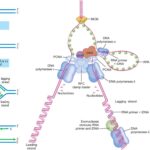IB Biology 30 Views 1 Answers
Sourav PanLv 9November 8, 2024
Why do most ecosystems rely on sunlight as a primary energy source?
Why do most ecosystems rely on sunlight as a primary energy source?
Please login to save the post
Please login to submit an answer.
Sourav PanLv 9May 15, 2025
Most ecosystems rely on sunlight as a primary energy source due to the fundamental role of photosynthesis in converting solar energy into chemical energy, which sustains life on Earth. Here’s a detailed explanation of why sunlight is essential for ecosystems:
The Role of Sunlight in Ecosystems
Photosynthesis
- Primary Producers: Plants, algae, and certain bacteria, known as autotrophs or primary producers, capture sunlight through photosynthesis. This process converts light energy into chemical energy stored in glucose, which serves as food for these organisms and forms the base of the food web.
- Energy Conversion: During photosynthesis, carbon dioxide and water are transformed into organic compounds (like carbohydrates) and oxygen. This process not only provides energy but also regulates atmospheric gases critical for life.
Energy Flow
- Trophic Levels: Energy flows through ecosystems in a unidirectional manner—from primary producers to various consumers (herbivores, carnivores). Each transfer of energy involves losses primarily as heat, which is why energy flow is often depicted as a pyramid with producers at the base and top predators at the apex.
- Efficiency of Energy Transfer: Typically, only about 2-10% of the solar energy captured by plants is converted into biomass that can be consumed by herbivores. This limited efficiency underscores the importance of having a continuous input of solar energy to sustain life.
Ecosystem Dynamics
- Biodiversity Support: Areas with abundant sunlight and effective photosynthesis tend to support higher biodiversity. For example, tropical rainforests and coral reefs thrive due to their high levels of sunlight and photosynthetic activity, which create rich habitats for diverse species.
- Sustainability: Sunlight is a renewable resource that provides a consistent and clean energy supply. In contrast, non-renewable energy sources can lead to ecological damage and depletion. Ecosystems that rely on solar energy are more resilient and capable of sustaining diverse life forms over time.
Exceptions to Sunlight Dependency
While sunlight is the primary energy source for most ecosystems, some unique environments—such as deep-sea hydrothermal vents—derive their energy from chemical processes (chemosynthesis) rather than sunlight. In these ecosystems, chemosynthetic bacteria convert inorganic compounds into organic matter, supporting specialized communities
0
0 likes
- Share on Facebook
- Share on Twitter
- Share on LinkedIn
0 found this helpful out of 0 votes
Helpful: 0%
Helpful: 0%
Was this page helpful?




